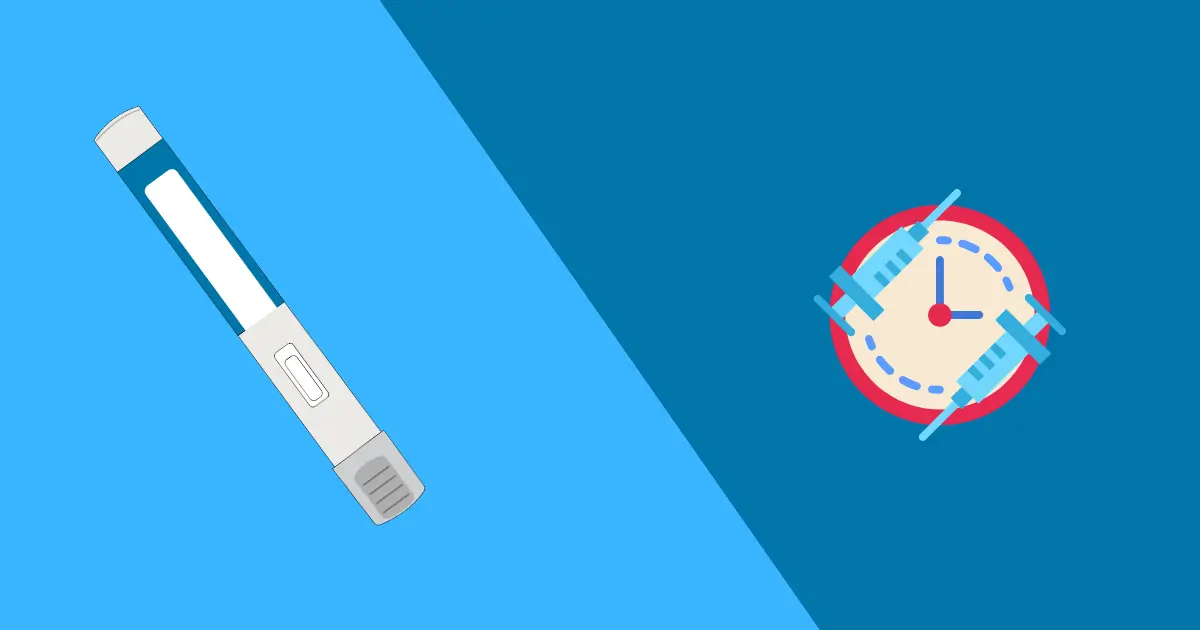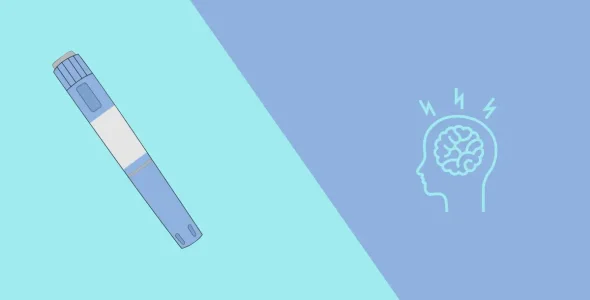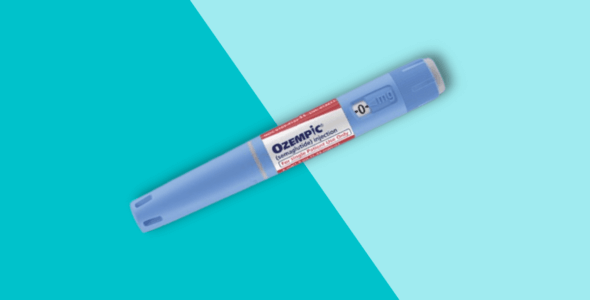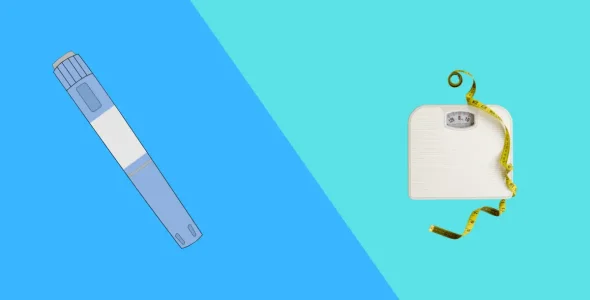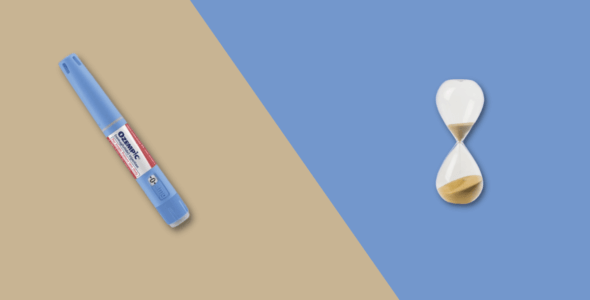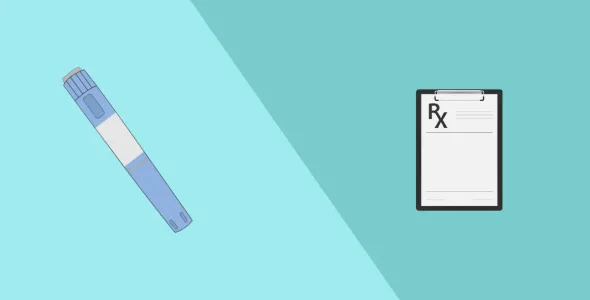Microdosing Ozempic: The complete guide to safe, effective low-dose use
While not yet endorsed by clinical guidelines, emerging evidence suggests that microdosing strategies for semaglutide may offer a valuable therapeutic approach in managing type 2 diabetes and obesity, particularly for patients intolerant to standard dosing regimens.
Key highlights
- Ozempic is an injectable GLP-1 medication that contains semaglutide as its active ingredient. This medication is used for managing type 2 diabetes and reducing the risk of cardiovascular diseases and worsening kidney disease. Your doctor may recommend it off-label for weight management.
- Microdosing is referred to as using the medication in small, non-standard doses that are typically below the standard Ozempic dose (0.25 mg to 2 mg) to achieve slow and gradual effects.
- The typical starting Ozempic microdose is 0.05 mg, which is one-fifth of the standard starting dose, and the dose is typically increased by 0.1 mg every
- Microdosing Ozempic is not approved by the FDA. Insurance companies do cover the medication for microdosing.
- It is important to seek medical advice from your healthcare provider before starting Ozempic microdosing or other weight loss drugs such as Mounjaro and Tirzepatide.
Ozempic is an FDA-approved GLP-1 (glucagon-like peptide-1) receptor agonist, which is injected subcutaneously once weekly. Semaglutide mimics the activity of a natural hormone (GLP-1), which is released from your intestine and brain in response to food and regulates your body’s sugar level and metabolism. This medication works by stimulating insulin release, inhibiting glucagon secretion, reducing gastric emptying, and decreasing appetite and food cravings.
Ozempic, in combination with a healthy diet and exercise, is used to lower blood sugar levels in individuals with type 2 diabetes mellitus, reduce the risk of heart diseases, and prevent kidney failure in patients with chronic kidney disease. Your healthcare provider may prescribe this medicine off-label for weight management. The FDA-approved weight loss medication is called Wegovy, which contains the same active ingredient as Ozempic, semaglutide.
Microdosing is referred to as using low doses of Ozempic as compared to standard or therapeutic doses to achieve certain health benefits while minimizing the potential side effects. Microdosing is not officially approved. It is used off-label and should only be done under the supervision of your healthcare provider. Most people choose microdoses of Ozempic because of fewer side effects, mild weight loss support, appetite suppression, cost savings, and improved tolerance.
In this article, you will learn about what Ozempic is, what Ozempic microdosing is, why people choose Ozempic microdosing, and how it is helpful for your diabetes or weight loss journey.
Ozempic: Standard dosing protocol and its mechanism
Ozempic is an injectable medicine that is administered subcutaneously once a week. The starting standard dose of Ozempic is low (0.25 mg), which is injected once weekly for the first four weeks. The medication is started at a low dose to help your body adjust and reduce the risk of gastrointestinal side effects. This is an initiation dose and is not sufficient to achieve the full therapeutic effects.
The Ozempic dose is gradually titrated every 4 weeks to achieve optimal blood sugar levels and body weight (off-label). After 4 weeks, your doctor will assess your symptoms and increase the dose to 0.5 mg once weekly, if required. If you need additional glycemic control and your body can tolerate the 0.5 mg dose, your healthcare provider may increase the dose to 1 mg once weekly.
If your body is still not maintaining blood sugar levels or additional glycemic control is required after 4 weeks on a 1 mg dose, your health care provider may increase the dose to 2 mg once weekly.
Titration is a process in which the Ozempic dosage is gradually increased to find the optimal therapeutic dose. The standard Ozempic dosage is titrated as follows:
- Weeks 1-4: 0.25 mg dose once weekly
- Weeks 5-8: 0.5 mg dose once weekly
- Weeks 9-12: 1 mg dose once weekly
- Weeks 13-16: 2 mg dose once weekly
The standard maintenance dose of Ozempic is typically 1 mg per week, and the maximum recommended dose is 2 mg per week. The standard dosing schedule of Ozempic has been established after rigorous clinical trials to ensure the safety and efficacy of the medication.
Mechanism of action
Ozempic contains semaglutide as its active ingredient. Semaglutide has 94% similarity in structure with the natural GLP-1 hormone, which is released from your intestines and brain in response to food. Semaglutide mimics the activity of the GLP-1 hormone that regulates your body’s sugar level and metabolism and occupies its receptors. The mechanism of action is as follows:
- Stimulates insulin release: Ozempic binds with the GLP-1 receptors in the pancreas and activates them. This activation releases insulin when the blood glucose level is high and helps reduce post-meal sugar spikes and promote glycemic control.
- Suppresses glucagon: The medication also inhibits the release of glucagon from the alpha cells of the pancreas to maintain your blood glucose levels.
- Slows gastric emptying: Semaglutide also binds with GLP-1 receptors in your gut. When these receptors are activated, they affect your gut motility and decrease the rate of gastric emptying, resulting in a feeling of fullness (satiety).
- Reduces appetite: This medication reduces your appetite by sending signals of fullness to your brain, lowering the hunger stimulation hormone, and delaying gastric emptying.
FDA-approved uses
Ozempic is approved by the U.S. Food and Drug Administration (FDA) for individuals with type 2 diabetes mellitus to promote glycemic control, lower the risk of worsening kidney disease in patients with chronic kidney disease, and reduce cardiovascular risk. This medication can also be used off-label for weight management along with diet and exercise due to its glucose-lowering effect.
Wegovy is an alternative to semaglutide, which is an FDA-approved medication for chronic weight management. While Ozempic is also useful for weight loss, Wegovy is specifically FDA-approved for chronic weight management and is given at higher doses (2.4 mg once weekly) than Ozempic. Wegovy can be prescribed to individuals who are overweight or have a BMI (body mass index) of 30 or greater, or a BMI of 27 or greater with at least one other weight-related health condition. Your healthcare professional may prescribe Ozempic if you are experiencing severe side effects or an allergy to Wegovy or other GLP-1 drugs.
Ozempic can also be prescribed off-label for women with polycystic ovary syndrome (PCOS), a condition that often leads to insulin resistance, resulting in weight gain. This medication helps manage sugar levels, reduce weight, and improve ovulation.
What is microdosing Ozempic?
Microdosing Ozempic means using small, subtherapeutic doses of Ozempic (semaglutide), which are usually lower than the standard therapeutic doses. The goal of Ozempic microdosing is to achieve a therapeutic effect, such as appetite control, mild weight loss, and reducing the risk of gastrointestinal side effects such as nausea, vomiting, and constipation.
What does “microdosing Ozempic” mean?
Microdosing Ozempic means using smaller amounts of Ozempic, which is smaller than the standard starting doses (0.25 mg and 0.5 mg). For example, the standard initiation dose of Ozempic is 0.25 mg weekly for the first four weeks, followed by an increment to 0.5 mg after 4 weeks. In microdosing, your healthcare professional may recommend a 0.05 mg weekly dose of Ozempic for 4 weeks, which is 1/5th of the standard dose. It may help achieve mild weight loss and appetite suppression with fewer side effects.
Microdosing Ozempic is not approved by the U.S. Food and Drug Administration (FDA). Your healthcare provider may prescribe microdosing Ozempic off-label to help you achieve desired results.
Microdosing can also be done by reducing the frequency of administering the medication. For example, your provider may recommend administering the injection every 10, 14, or 21 days instead of a weekly dose. It can also help maintain the benefits for a longer duration with less frequent injections.
Your healthcare provider may also increase the Ozempic dose more slowly than the recommended plan. For example, they may increase the dose after months rather than weeks.
Why are people microdosing Ozempic?
Many patients prefer microdosing Ozempic due to the following health benefits.
Mitigating side effects
The standard Ozempic dose can cause side effects, such as nausea, vomiting, diarrhea, and constipation. Microdosing is particularly helpful for those individuals who experience severe and intolerable side effects. Lower doses of Ozempic may help you mitigate these potential side effects.
Cost savings by extending the supply
Ozempic and Wegovy are expensive medications that cost $1,000 to $1,300 per month without insurance, and insurance coverage varies by plan. Most insurance plans cover Ozempic for diabetes only and not for weight loss. Microdosing Ozempic can stretch a single injection 2-4x longer than usual.
Due to increased popularity, the demand for Ozempic has exponentially increased. The manufacturer, Novo Nordisk, was not able to fulfill its demand. The shortage of Ozempic started in April 2022. Many patients started using compounded semaglitide as an alternative to Ozempic. Microdosing can help navigate these shortages.
Gentler, gradual approach
Starting at a low dose and increasing it slowly gives your body more time to adapt to the medication. Microdosing helps reduce the risk of potential side effects as it has a less potent effect on your body. If you want gradual and sustainable weight loss with Ozempic, microdosing offers a gentler and gradual approach.
Addressing “Ozempic face”
Although most patients desire to achieve significant weight loss with Ozempic (off-label use), sometimes they may experience unfavourable side effects as a result of rapid weight loss, such as loss of facial fat, which is commonly referred to as the Ozempic face.
Microdosing helps with slower and more gradual weight loss instead of rapid weight loss, which helps maintain your facial appearance.
Personalized sensitivity
The body’s response to Ozempic varies from person to person. Some individuals are highly sensitive to standard Ozempic doses and experience intolerable side effects. Microdosing allows them to test their body’s response at very low doses.
How people are microdosing
Microdosing is not FDA-approved for type 2 diabetes mellitus and weight loss. However, healthcare providers may recommend it off-label if medically appropriate for an individual patient. Many people are microdosing in the following ways:
Click counting with pre-filler pens
Ozempic is available in the form of pre-filled injection pens that are designed to deliver a fixed amount of Ozempic doses (like 0.25 mg, 0.5 mg, 1 mg, and 2 mg) with a reservoir that holds the medication and a needle tip. Patients will manually rotate the wheel located at the base of the pen to adjust the dose.
Some users who are trying to microdose do not rotate the wheel up to a full dose. For example, if you are consuming a 0.25 mg Ozempic dose, you may need 20 clicks to reach the full 0.25 mg dose. However, if you want to microdose, you might only turn the dial up to 4-5 clicks, estimating the dose around 0.05-0.06 mg. This is how the click-counting mechanism works.
This method seems simple, but it might be challenging for patients because the Ozempic pens are not made for microdosing. Therefore, always consult with your healthcare provider if you face any difficulty with dosing.
Using insulin syringes with multidose vials
Some patients are microdosing Ozempic by using semaglutide multidose vials (compounded version). This method allows dose control for those who want to start semaglutide at a very low dose (0.05 mg) that is far below the standard therapeutic dose.
Compounded semaglutide is available in liquid form in vials. The patient draws out the desired amount of semaglutide in the insulin syringe and injects it under the skin (subcutaneously). However, compounded semaglutide is not FDA-approved. Always purchase compounded semaglutide from a licensed and reputable pharmacy.
Obtaining compounded low-dose versions
Microdosing Ozempic is becoming popular. Some clinics and compounded pharmacies are now offering a custom-formulated low-dose version of semaglutide according to the patient’s individual needs. This microdosing routine is considered more favorable than others when the compounded medication is formulated by reputable and licensed pharmacies.
Does microdosing Ozempic work?
There are no clinical trials that support the effectiveness of Ozempic microdosing as compared to the standard therapeutic doses. However, the results vary from person to person. Some patients experience positive results even at very low doses, while others notice little or no health benefits.
What happens when you microdose Ozempic?
When you microdose Ozempic, you may experience mild appetite suppression, low blood sugar levels, and mild weight loss with fewer gastrointestinal side effects. However, these results are not backed by clinical trials and vary from person to person.
Benefits of microdosing semaglutide
The benefits of microdosing Ozempic vary from person to person. People may choose microdosing Ozempic due to the following benefits:
Reduced gastrointestinal side effects
People using standard Ozempic doses (like 0.25 mg, 0.5 mg, 1 mg, and 2 mg) may experience gastrointestinal-related side effects such as nausea, vomiting, diarrhea, and constipation. Microdosing Ozempic helps their body adapt more gently and gradually, and reduces the risk of these side effects. It can also increase the patient’s tolerability and adherence to the medication.
Sustained and gradual weight loss
The standard Ozempic dose may cause rapid weight loss (which can be very difficult to sustain) and lead to loss of facial volume, also known as the Ozempic face. Microdosing reduces the risk of rapid weight loss and promotes sustained and gradual weight loss. Microdosing allows your body to adapt slowly to changes caused by the medication. For example, it slowly promotes appetite suppression and increases insulin sensitivity, leading to more consistent and long-term habits.
Improved glucose control
Microdosing semaglutide is not FDA-approved for improving your blood glucose levels. However, this practice may be used off-label to promote glycemic control slowly and gradually.
Improved metabolic health
In the SUSTAIN-6 clinical trial, 3,297 patients with type 2 diabetes received semaglutide or placebo for 104 weeks. These patients already had established cardiovascular diseases. Type 2 diabetes patients receiving semaglutide experience significant improvements in glycemic control, cardiovascular health, and body weight compared to those receiving a placebo.
The medication reduced HbA1c by 1.4%, fasting plasma glucose level by 26.4 mg/dL, and body weight by 4.3 kg. Semaglutide also led to a reduction of major cardiovascular events by 26%, with a 39% lower risk of non-fatal stroke.
Semaglutide is primarily recognized for its metabolic benefits, including regulating blood glucose levels, promoting weight loss, and enhancing lipid profiles. However, some studies support the anti-inflammatory effect of the medication.
In STEP 1-3 clinical trials (2018-2020), a 2.4 mg weekly dose of semaglutide significantly reduced the CRP (C-reactive protein) level by 49% and a 1 mg weekly dose of semaglutide lowered it by 42%, compared to placebo, after 68 weeks. C-reactive protein is an acute-phase inflammatory protein that reflects systemic inflammation and is closely associated with insulin resistance.
The following clinical studies indicate a reduction in inflammatory markers with semaglutide.
| Treatment | Study Population | Dosage / Duration | Observed Effects |
|---|---|---|---|
| Semaglutide | 40 men with diabetes mellitus (DM) | 1 mg/week for 6 months (injection) | Significant reduction in inflammatory markers TNF-α and IL-6 |
| Semaglutide | 20 patients with type 2 diabetes mellitus (T2DM) | 1 mg/week for 3 months (injection) | Minimal and statistically non-significant changes in CRP and IL-6 |
| Semaglutide | Patients with T2DM | Not specified | Associated with a reduction in hsCRP levels compared to baseline |
| Semaglutide | Obese patients with T2DM | Escalating dose: 0.25 mg/week (4 weeks) → 0.5 mg/week (16 weeks) → 1 mg/week (10 months) | Improved psoriasis symptoms and reduced epicardial fat inflammation |
| Semaglutide | Patients with T2DM and chronic kidney disease (CKD) | 3 mg/day orally for 9 months | Improved kidney function, possibly through anti-inflammatory mechanisms |
| Semaglutide | Epicardial fat samples from patients undergoing open-heart surgery | Not specified | Reduced neutrophil adhesion to endothelial cells and promoted angiogenesis |
| Semaglutide | Epicardial fat biopsies from cardiac surgery patients | Not specified | Induced anti-thrombotic and anti-atherosclerotic effects via neutrophil suppression |
These results show that semaglutide significantly reduces inflammation and the risk of cardiovascular events. However, research on the benefits of Ozempic microdosing on cardiovascular health is still needed.
Other potential benefits
Several health conditions, such as autoimmune diseases, are linked to obesity, overweight, and insulin resistance. Research studies show that weight-lowering treatments improve insulin sensitivity and decrease insulin resistance, eventually improving the severity of autoimmune conditions.
Additionally, menopause is linked to body weight changes after the age of 40-50 years. Most women tend to gain body weight due to hormonal changes and an impaired ratio between energy output and energy consumption. GLP-1 medication, such as Ozempic, can be helpful in weight reduction in menopausal women.
Microdosing Ozempic can help reduce weight due to menopause. However, these claims are largely theoretical and lack substantial scientific support.
Cost savings
Ozempic and Wegovy are costly medications. The average retail price of Ozempic ranges between $1,000 and $1,300 per month without medications. Microdosing helps save the cost of Ozempic for cash-paying patients by stretching the duration of each dose. It is sometimes used as a temporary strategy during supply shortages.
Behavioral and lifestyle alignment
Ozempic is always used as an adjunct to exercise and a low-calorie diet. Most patients find it difficult to suddenly shift towards a healthy lifestyle. Microdosing Ozempic promotes appetite suppression and gives you a feeling of fullness or satiety more slowly than standard doses. This helps people eat less and also reduces hedonic eating (eating for pleasure rather than hunger). Microdosing helps develop these habits slowly.
Microdosing semaglutide schedule: How to microdose semaglutide
The typical starting microdose of Ozempic is 0.05 mg, which is 1/5th of the standard Ozempic starting dose (0.25 mg). Your healthcare provider will escalate the dose according to your body’s response. An example titration schedule for Ozempic microdosing is as follows:
- Week 1-4: 0.05 mg weekly
- Week 5-8: 0.1 mg weekly
- Week 9-12: 0.2 mg weekly
Your healthcare provider will gradually increase the dose by 0.1 mg every 4 weeks according to your body’s tolerance and desired goals.
Ozempic microdosing chart
| Pen Size | Dose (mg) | Clicks | Dosing Frequency |
|---|---|---|---|
| 0.25 / 0.5 mg | 0.06 mg | 9 clicks | Once weekly |
| 0.13 mg | 18 clicks | Once weekly | |
| 0.25 mg | 36 clicks | Once weekly | |
| 0.29 mg | 42 clicks | Once weekly | |
| 0.33 mg | 48 clicks | Once weekly | |
| 0.38 mg | 54 clicks | Once weekly | |
| 0.42 mg | 60 clicks | Once weekly | |
| 0.46 mg | 66 clicks | Once weekly | |
| 0.5 mg | 72 clicks | Once weekly | |
| 1 mg | 0.13 mg | 9 clicks | Once weekly |
| 0.25 mg | 18 clicks | Once weekly | |
| 0.5 mg | 36 clicks | Once weekly | |
| 0.58 mg | 42 clicks | Once weekly | |
| 0.67 mg | 48 clicks | Once weekly | |
| 0.75 mg | 54 clicks | Once weekly | |
| 0.83 mg | 60 clicks | Once weekly | |
| 0.92 mg | 66 clicks | Once weekly | |
| 1 mg | 72 clicks | Once weekly | |
| 2 mg | 0.25 mg | 9 clicks | Once weekly |
| 0.5 mg | 18 clicks | Once weekly | |
| 1 mg | 36 clicks | Once weekly | |
| 1.17 mg | 42 clicks | Once weekly | |
| 1.33 mg | 48 clicks | Once weekly | |
| 1.5 mg | 54 clicks | Once weekly | |
| 1.67 mg | 60 clicks | Once weekly | |
| 1.83 mg | 66 clicks | Once weekly | |
| 2 mg | 72 clicks | Once weekly |
Risks and considerations for microdosing Ozempic
Microdosing Ozempic is associated with some potential risks that you should be aware of:
Off-label and experimental without FDA approval
The FDA approves the standard Ozempic doses after rigorous clinical trials. The efficacy and safety of standard approved Ozempic doses are well known. While there are limited research studies on microdoses, they are not supported by large-scale clinical trials. The effectiveness for weight loss is largely anecdotal and unproven. Subtherapeutic doses of Ozempic may give little or no clinical benefit for some patients.
Reduced effectiveness for primary health conditions
If you’re microdosing Ozempic for type 2 diabetes, it may not provide the full therapeutic effect needed to effectively manage your blood sugar levels. Additionally, microdosing is unlikely to deliver the clinically proven weight loss associated with standard dosing.
Risk of dosing errors
Although microdosing semaglutide is gaining popularity due to its potential benefits, such as reduced gastrointestinal side effects, mild weight loss, and appetite suppression, the accuracy of dosing is challenging. Most devices and delivery methods are not designed for microdosing, and patients have an increased risk of dosing errors.
“Click counting” risks
Many people use a standard Ozempic pen for microdosing by counting the number of clicks.
Standard Ozempic pens are available with a fixed dosage strength and are not designed for delivering fractional doses. Click counting mistakes may increase the risk of inconsistent delivery.
Self-administration risks
Microdosing may increase the risk of medication overdose or underdose. Higher doses may cause side effects, while underdoses may not give therapeutic effects.
Challenges with the administration
Ozempic is available in the form of pre-filled pens, which deliver fixed standard doses (0.25 mg, 0.5 mg, 1 mg, and 2 mg). Therefore, administering a microdose with these pens can be challenging.
Some users draw the desired amount of semaglutide from the Ozempic pen with the help of an insulin syringe. This practice may involve the reuse of needles, improper syringe handling, and the presence of an air bubble in the syringe, which can increase the risk of contamination and inaccurate dose delivery. If you want to microdose, always use sterile needles and follow aseptic measures to avoid the risk of contamination.
Some people may use compounded semaglutide for microdosing. Compounded semaglutide is not FDA-approved, and quality standards may vary across pharmacies.
The FDA has issued a warning about some compounded GLP-1 medications that contain semaglutide salts (semaglutide sodium or semaglutide acetate), which are different from the original semaglutide and have safety concerns. Additionally, substandard compounding techniques may also increase the risk of contamination.
Compounded semaglutide vials have a limited shelf life. Yet, many users are unaware of proper storage and expiration guidelines. Once the vial is punctured, it can typically be used for up to 28 days, even if refrigerated.
Improper storage, like exposure to heat, light, and freezing, may also affect the efficacy.
Importance of medical supervision
Dose adjustments in Ozempic microdosing should be done under the supervision of your healthcare provider to ensure safety and efficacy. Your healthcare provider will guide you about the precise dosing, monitor your side effects, and adjust the dose according to your body’s response. Microdosing is not for all patients.
After starting microdosing, your healthcare provider will regularly monitor your blood glucose level, weight, and side effects and will adjust the dose accordingly. This is why it is important to have regular follow-ups with your healthcare provider.
Potential for unknown long-term side effects
Microdosing semaglutide, when used off-label, may offer short-term benefits only, including mild appetite suppression and weight loss. The long-term safety profile remains unknown and is not supported by any clinical trials. Current clinical trials are based on the standard FDA-approved Ozempic doses.
When you stop microdosing Ozempic, your body may experience a reversal of its effects, such as increased hunger, weight regain, and increased blood glucose level, especially if not followed by a strict diet plan and healthy physical activity.
Potential microdosing Ozempic side effects and how to manage them
Consuming Ozempic microdoses can also cause side effects. The intensity of the side effects varies from person to person and may be less than the standard therapeutic dose. The most common side effects of Ozempic microdose can include the following:
Nausea
Nausea is a common side effect when starting treatment or increasing the dose. that might occur at the beginning. Ozempic contains semaglutide as its active ingredient, which slows down the gastric emptying, leading to nausea and a feeling of fullness.
To manage nausea, start with the lowest possible dose of Ozempic and eat smaller and bland meals throughout the day. Avoid eating fatty and spicy foods.
Constipation
Semaglutide also slows your digestion, resulting in reduced bowel movements, which can cause constipation.
Stay hydrated to improve your overall digestive health and replenish electrolytes. Take a diet rich in dietary fibers and proteins to help relieve constipation, preserve muscle mass, and reduce the risk of other gastrointestinal issues.
Appetite suppression
Semaglutide provides a feeling of fullness by decreasing gastric emptying and regulating the hunger hormones. You do not feel an urge to eat food. In some cases, this may lead to inadequate nutrient intake and fatigue.
Therefore, focus on eating nutrient-rich food to meet your daily protein and vitamin requirements and consult with your nutritionist for further assistance.
Pancreatitis
Pancreatitis cases have been reported during semaglutide clinical trials. Stop using the medication if you experience abdominal pain that radiates to the back, vomiting, and fever. This medication is not recommended for individuals with a history of pancreatitis. Consider alternative anti-diabetic medications if you have pancreatitis.
Gallbladder
Semaglutide reduces stomach emptying, which also affects the movement of bile, causing it to accumulate, leading to the formation of gallstones. Eat small, low-fat meals and keep yourself hydrated to support the bile flow in the gallbladder and avoid the formation of gallstones.
Other rare side effects include:
- Change in vision (worsens diabetic retinopathy)
- Hair loss
- Increased risk of aspiration during surgical treatments requiring sedation and anesthesia
- Hypoglycemia
- Excessive burping
- Severe stomachache
- Allergic or hypersensitivity reactions
The medication is not recommended for patients with a personal or family history of thyroid tumor, such as medullary thyroid cancer (MTC) and MEN 2 syndrome (Multiple endocrine neoplasia type 2 syndrome).
If you are pregnant or breastfeeding, or planning to conceive, do not take the medication.
Where to get Ozempic for microdosing
To get Ozempic for microdosing, you should have a valid prescription from a licensed healthcare professional. Ozempic and Wegovy are usually available at standard pharmacies in the U.S., such as CVS and Walgreens.
There are also compounding pharmacies that offer personalized compounded semaglutide vials that can help with microdosing. You can ask your healthcare provider to recommend a legitimate compounding pharmacy, or you can search for local pharmacies.
Finding a qualified healthcare provider
If you plan on microdosing Ozempic (off-label), it is essential to find a licensed healthcare provider who is experienced in GLP-1 medications. Your healthcare provider will guide you about the appropriate Ozempic dosage, risks, and benefits of the medication. You may ask the following questions of your healthcare provider when considering Ozempic microdosing:
- What is your experience with GLP-1 medications?
- How is Ozempic different from other antidiabetic medications?
- Is Ozempic safe for me?
- Am I a good candidate for Ozempic weight loss?
- Where should I buy the compounded Ozempic?
- What are the potential side effects of starting Ozempic microdosing?
- How do I make lifestyle changes, such as a healthy diet and exercise, while using GLP-1 medications?
- Can a small dose of Ozempic control my blood sugar level?
- Will microdosing Ozempic affect my weight?
- Is microdosing Ozempic safe and effective?
- How much does Ozempic cost per month?
- Is Ozempic safe if I have comorbid conditions?
- What are the warning signs to stop the medication?
Compounded vs. brand-name medications
If you are considering microdosing, you have two options:
- Brand-name medications (Ozempic and Wegovy)
- Compounded medications
Compounded medications are formulated in licensed compounded pharmacies. These are custom-made versions of the medication, according to the patient’s individual needs. Compounded options are typically considered due to the following.
- Shortages: When there are drug shortages, compounding pharmacies can supply a compounded version of the medication according to the patient’s requirements.
- Need for personalized dosing: Brand-name medications are available in fixed strengths in the form of pre-filled pens. Compounded pharmacies, on the other hand, offer personalized dosing according to your needs, when medically appropriate.
If you are considering using compounded medication, it is essential to vet the compounding pharmacies to ensure the safety and quality. You can vet the compounding pharmacies by following these tips:
- Verify that the pharmacy is licensed by its state pharmacy board.
- Check the accreditation of the compounding pharmacy from the Pharmacy Compounding Accreditation Board (PCAB)
- Read user reviews.
- Check the certification of the compounding pharmacies, as some pharmacies have certification from Good Manufacturing Practice (GMP)
Monitoring and adjustment
It is essential to monitor your progress while Ozempic microdosing, such as tracking weight loss, HbA1C, and potential side effects. Your healthcare provider will assess your symptoms and adjust the dose according to your body’s needs.
While using multi-dose pens for microdosing, the clicks are used to adjust the dose. Each click represents an increment of the Ozempic dose. Your healthcare provider will guide you on the number of clicks to inject based on your specific needs. The dose may be increased or decreased depending on your body’s response.
Ozempic microdosing FAQs
What is the difference between microdosing and standard Ozempic dosing?
Ozempic microdosing refers to using smaller doses, typically starting at 0.05 mg, which is lower than the standard therapeutic dose (0.25 mg). In contrast, standard Ozempic doses are higher than microdoses and are approved by the FDA. Standard approved Ozempic doses are 0.25 mg, 0.5 mg, 1 mg, and 2 mg. Microdosing is not approved by the FDA and provides small and gradual effects. On the other hand, standard dosing is FDA-approved to provide therapeutic benefits.
Microdosing Ozempic vs. Standard Ozempic dosing
| Category | Microdosing Ozempic | Standard Ozempic Dosing |
|---|---|---|
| Dose | 0.05–0.5 mg weekly | 0.25–2 mg weekly |
| Evidence for Weight Loss | Anecdotal only | Strong clinical trial support |
| Side Effects | Typically milder | Dose-dependent, often more severe |
| FDA Approval | No | Yes |
| Dosing Accuracy | Lower (higher risk of error) | High (pre-set doses) |
| Cost | Lower per dose | Higher per dose |
Is microdosing Ozempic safe?
Microdosing Ozempic is not approved by the FDA. The safety and efficacy of microdosing are not well documented in clinical trials. However, there are some risks of microdosing Ozempic, such as inaccurate dosing (overdosing or underdosing), reduced efficacy, and potential side effects. It is important to consult with your healthcare provider if you are considering microdosing.
How long to see results with microdosing?
The results of microdosing vary from person to person, depending on their body’s response. Generally, it takes several weeks to months to experience any changes as microdosing involves lower doses that work slowly and gradually.
Are there any long-term risks with microdosing Ozempic?
Yes, microdosing Ozempic is not FDA-approved and also not supported by clinical research. There may be long-term risks with microdosing, including fluctuation in blood sugar levels, gastrointestinal side effects, and risk of overdose or underdose, contamination, reduced efficacy, pancreatitis, and cholelithiasis.
Will insurance cover microdosing Ozempic?
Microdosing is not FDA-approved for weight loss or glycemic control. Therefore, insurance does not cover Ozempic microdosing. Insurance only covers FDA-approved Ozempic doses for FDA-approved indications.
Is it safe to use compounded semaglutide for microdosing?
Compounded semaglutide may carry risks because it is not approved by the FDA. Many compounded pharmacies offer compounded semaglutide, and the quality of the medication varies among pharmacies. The effectiveness of compounded semaglutide is not guaranteed, and there may be a variation in safety practices, quality control, sterility, and efficacy. If you are considering using compounded semaglutide, ask your healthcare provider to recommend a licensed compounded pharmacy.
Can I microdose semaglutide without a prescription?
No, you cannot microdose semaglutide without a prescription from a licensed healthcare provider. The medication should only be used after receiving a valid prescription from a licensed healthcare provider.
Conclusion: Is microdosing Ozempic right for you?
Microdosing Ozempic can be a preferred alternative to standard dosing for diabetic and non-diabetic individuals (for promoting weight loss). However, it is an unproven strategy that carries multiple risks. Microdosing can be useful for gradual and sustained weight loss, but there are no clinical trials or scientific research on the safety and efficacy of Ozempic microdosing.
Before considering microdosing, consult with your healthcare provider, who will ensure safety and accurate dosing. While taking the medication, track changes in your blood sugar levels, body weight, and side effects.
